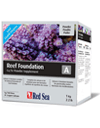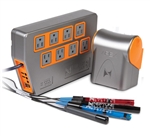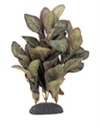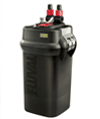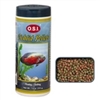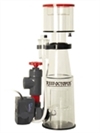How to Keep Schooling Fish
(A Guide to Managing Aggression)

If you have seen any nature documentary about the ocean, you have seen what a school of fish looks like. Fish schools are groups of fish that move as a unit through the water in a coordinated manner. Some fish species do this to intimidate predators and make individual fish harder for a predatorís eyes to track.
Schooling fish include Anthias, Tangs, Chromis, Butterflyfish, Squirrelfish, Cardinal Fish, Tetras, many African Cichlids, Minnows, Barbs, Rainbowfish, Hatchetfish, and Danios. Schools of fish are beautiful and mesmerizing, but they can be difficult to replicate in home aquariums. In aquariums many of the fish that school in large groups are known for fighting with fish of the same species. Starting with a group of fish often results in one fish left swimming. Here are some tips to mitigate aggression and successfully keep fish schools in your home aquarium.
Start With More Fish
When trying to keep a school of fish, the worst way to add the fish is one at a time with weeks or months in between additions. When adding fish like this the first fish has plenty of time to establish a territory in the aquarium, and once the next fish is added the original fish will mercilessly pick on the new fish often resulting in its death. When trying to keep a school of fish, it is best to add all of the fish at once. If you need to add more fish to the school later, then add multiple fish as an addition, and not a single fish. The exact number of fish you should start with depends on the species but generally, 3-7 fish is a minimum. Often true schooling behavior isnít observed until 12 or more fish are in the school.
Have Plenty of Space
Given that you might need to add as many as 12 fish to create a school, a reasonably large aquarium is needed to replicate schooling behavior. For freshwater aquariums, one inch of fish per gallon is the upper limit. For saltwater aquariums, one inch of fish per five gallons is the upper limit. And by one inch, we mean the size of the fish when they are fully grown.
The need for space is not just because of the bioload created from multiple fish, it is also because the school needs enough swimming space to move as a unit. If you keep the school in a small aquarium, then the school will be schooling, but it wonít look like it because the tank is so small that it simply looks like the fish are scattered around the tank. If you canít get a larger tank, then you might want to consider getting a larger number of smaller species of fish.
Know the Sex
In many cases, aggression in a school comes from male fish fighting over females. Keeping 5 fish with 3 males and 2 females will almost always be more problematic than keeping 4 females and 1 male. Not all schooling fish can be easily sexed, but if you can easily tell the difference between male and female, then try to select mostly female fish or even only female fish. Some schooling fish such as Anthias live in harems with 1 dominant male and many female fish. If you start with all female fish the dominant fish will turn into a male. Adding multiple males nearly always results in only 1 male surviving.
Feed Heavily
When fish are hungry they get extra aggressive because they perceive other fish, especially other fish like them, as competitors taking their scarce food. When fish are well fed the aggression subsides. One key to mitigating aggression with schooling fish is feeding lots of food often. Most schooling fish eat all day throughout the day as grazers, planktivores, or insectivores. These fish are not designed to eat 1 large meal a day, they have small stomachs and are much better off being fed 3-7 times a day. In public aquariums, they are often fed hourly. Since none of us sit next to our aquariums all day feeding our fish, using a TLF Veggie Clip, with Sea Veggies for saltwater herbivores or zucchini for freshwater herbivores, will allow fish to graze throughout the day. Another option is to use an automatic feeder such as the OASE FishGuard Automatic Fish Feeder or Lifegard Inteli-Feed. These automatic feeders can add pellet food automatically up to 4 times a day.
Have Hiding Spots
In many fish schools, there will always be some aggression. Having plenty of caves, overhangs, and hiding places will allow fish to get away from bullying fish. Extremely minimal aquascapes are not ideal for schooling fish. It is often best to have an open area for swimming while also having an area the fish can dart into if they feel threatened.
|







